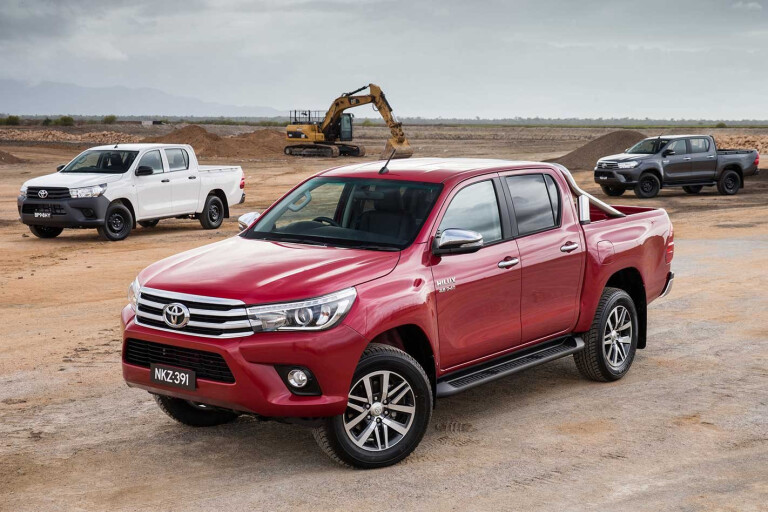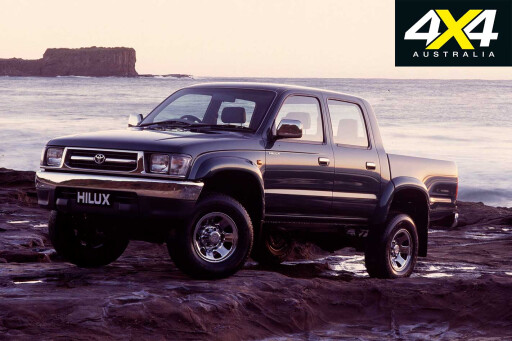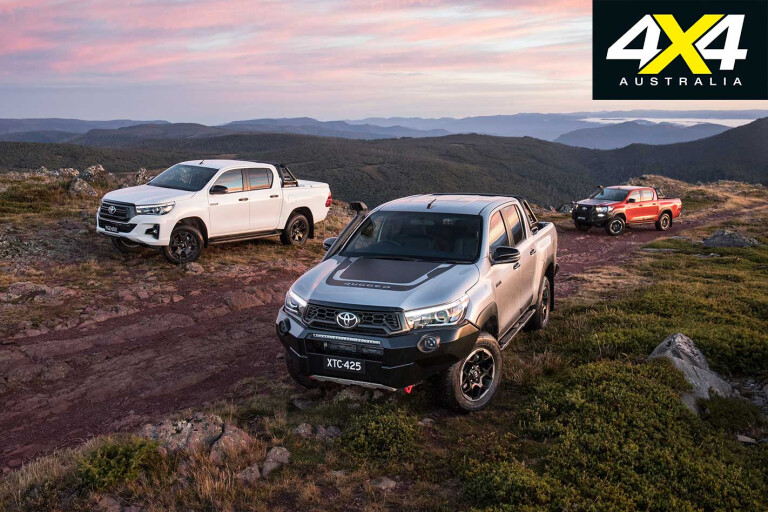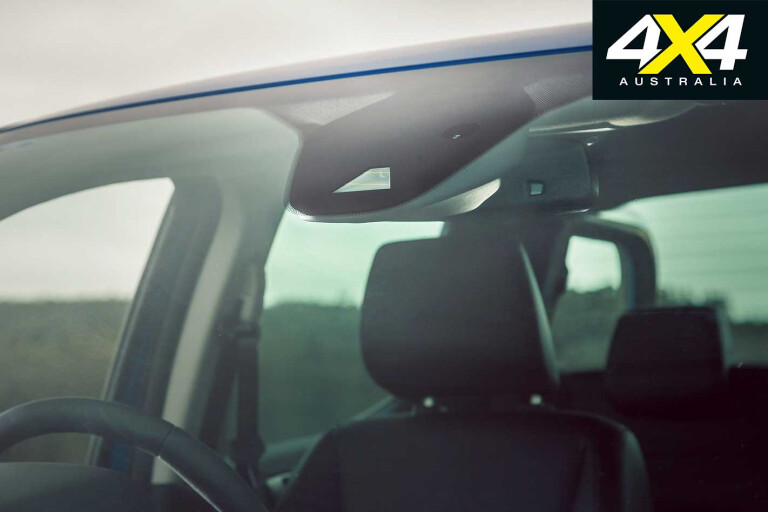
OVER THE past quarter of a century there have been huge advances in 4x4 design and technology, and these advances can be clearly seen when looking at the once-humble and very basic 4x4 ute.
When I first started writing about 4x4s back in the mid-1990s, the Toyota Hilux 2.8D mustered a modest 60kW at 4000rpm and 183Nm at 2400rpm, and it had a 1500kg braked towing capacity. Today’s 2.8TD equivalent makes 130kW and 450Nm, an increase of 221 per cent and 245 per cent respectively, and it has a 3500kg braked towing capacity, which is up a whopping 233 per cent.
 Sure, the cylinder count and capacity is the same, but that’s about it for similarities in engine design. The 1996 Hilux’s 3.0L was a naturally aspirated SOHC indirect injection diesel engine, whereas the current 1GD-FTV is a turbocharged DOHC common rail direct-injection diesel engine.
Sure, the cylinder count and capacity is the same, but that’s about it for similarities in engine design. The 1996 Hilux’s 3.0L was a naturally aspirated SOHC indirect injection diesel engine, whereas the current 1GD-FTV is a turbocharged DOHC common rail direct-injection diesel engine.
Back in 1996, standard equipment on the top-spec $41,750 Hilux Double Cab SR5 consisted of a five-speed manual gearbox (there was no auto option), auto-locking hubs, cloth trim, carpet, AM/FM radio/cassette player (remember them?) with two speakers, and oil temperature and voltmeter gauges. The wheels were 16-inch steelies, you had to stick your arm out the window to adjust the mirrors, and air conditioning was a $2268 option.
Today’s $54,440 HiLux Double Cab SR5 comes standard with a six-speed manual gearbox with intelligent-shift (or optional six-speed auto), premium fabric seat trim, carpet, climate control air-con with rear vents, power windows and mirrors, keyless entry and start, 220V power outlet, Multi Information Display, colour touchscreen with sat-nav, six-speaker sound system with Bluetooth connectivity and DAB+, and much more. The SR5 isn’t even the top-spec model these days; that honour goes to the better equipped and leather-trimmed Rogue and Rugged X models.
As well as the inclusion of comfort and convenience features that would easily outgun a 1996 luxury saloon, there have been incredible safety advances over the past 25 years. In 1996 the safety package of the Hilux Double Cab SR5 consisted of three-point seatbelts and head rests for front seat occupants, with disc brakes up front and drums at the rear.

There was no ABS and no SRS airbag protection. Today’s Hilux Double Cab SR5 scores standard equipment such as ABS, Traction Control, Vehicle Stability Control, Reversing Camera, Hill-Start Assist Control, Downhill Assist Control, front-seat SRS airbags, three-point seatbelts and headrests for all positions, and more.
There are even better examples of advancement in ute offerings than the Hilux, such as the Ford Ranger, which now adds safety features including Inter-Urban Autonomous Emergency Braking (AEB) with Vehicle Detection and Pedestrian Detection, Adaptive Cruise Control with Forward Collision Alert and Lane Keep Assist/Lane Departure Warning. Features such of this were unheard of in any vehicle back in the 1990s, let alone a dual cab 4x4.

Then there are longer warranty periods. Back in 1996 Toyota offered a two-year/50,000km warranty on the Hilux; today it offers three-year/100,000km. Ford goes one better, offering a five-year/unlimited kilometre warranty on the Ranger.
There are some things that haven’t progressed very much, such as the basic vehicle architecture of the 4x4 ute, which still consists of a separate chassis, a live-axle rear-end with leaf springs (excluding coil-spring Navara/X-Class), independent front suspension (albeit now with coil struts instead of torsion bars) and a part-time 4x4 system (excluding Triton and Amarok).
Overall load capacity has not increased, either; in fact, it has decreased for many examples. In 1996 the Hilux Double Cab SR5 had a 1060kg payload, but in 2018 the equivalent vehicle has a 960kg payload capacity. The reason for this is a big increase in kerb weight (up from 1660kg to 2040kg) due to all of the added comfort, convenience and safety features.

Another thing that hasn’t improved much over the years is fuel economy. Back in 1996 you’d get about 11.5L/100km from a Hilux Double Cab SR5; whereas the current model drinks at a rate of around 10.5L/100km, which is hardly a noteworthy improvement. But, again, the increased weight from all the extra inclusions, along with the vastly improved performance, goes a long way to explaining this.
All of the manufacturers are starting to think about their next-gen utes, some going it alone and others looking to collaborate. It will be interesting to see what the next big leap forward is for 4x4 utes. One can only imagine what they’ll be like in another 25 years.

COMMENTS